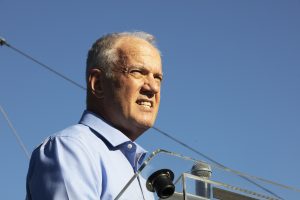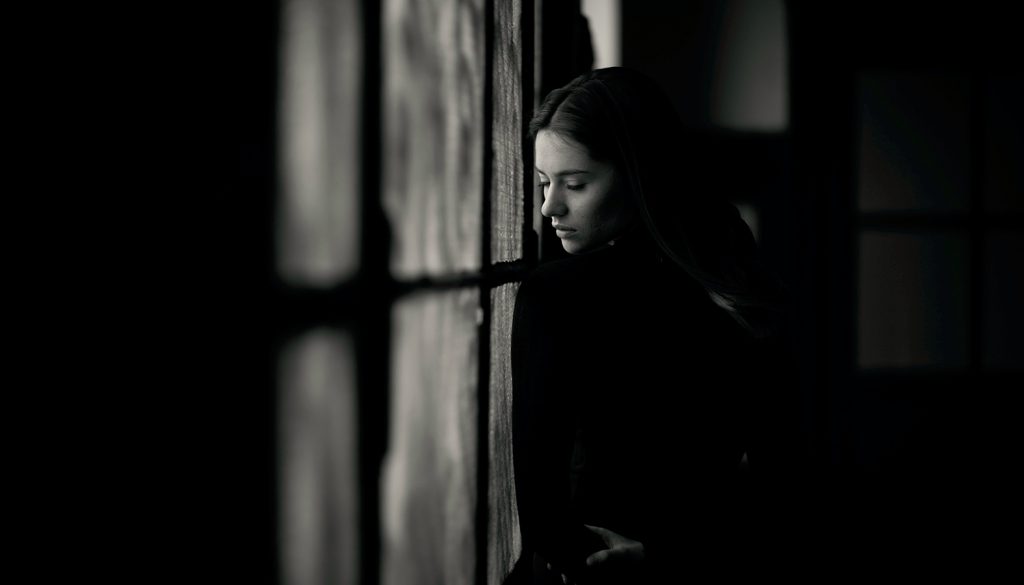Jessie Tappel never intended to open her own clinical counseling practice. A licensed professional counselor and approved clinical supervisor, Jessie had been happily seeing clients for psychotherapy at a faith-based clinic near Washington, D.C.
Her caseload was easy to balance with her role as a faculty member and administrator at Divine Mercy University, a graduate school in Sterling, Virginia, specializing in counseling and psychological studies.
But in January 2021, almost a year into the COVID-19 pandemic, she hit a wall.
That wall has a name — mental health professionals call it “compassion fatigue.” And thousands of American mental-health professionals are experiencing it.
“On top of being available to our clients, we have to manage our own stressors. The pandemic has been the first time that mental health professionals collectively are going through the same traumatic experience as their patients at the same time,” she said.
Along with her colleagues, Tappel noticed that it was hard to empathize with her patients, and that she was losing her sense of humor. “Those are the first signs of burnout,” she said. “I found myself having trouble transitioning from in-person sessions to Zoom. The disembodiment was dizzying.”
Opening her own practice, Tappel said, “was one way to take control of a shifting situation that I had no choice but to adapt to.”
Stories from clinicians like Tappel describe the fight ahead against what some call the next global pandemic. Rates of depression, anxiety, substance abuse, eating disorders, suicide, and suicidal ideation are climbing, sparing no demographic group. How to meet the increased demand for clinical services remains a pressing puzzle.
One obvious solution is to increase the number of available professionals by incentivizing more people to pursue a degree in the field. Another is to allow licensed practitioners to treat patients via telehealth across state lines, something that 14 states allow psychologists to do now.
But absent an immediate influx of practitioners, many are saying that a wider mental health network and workforce is needed to save lives and help those who are distressed. Experts say this network will need to involve parents, caregivers, teachers, pediatricians, teachers, and school administrators who are trained in both methods of prevention and ways to triage emergency situations.
“Mental health counselors are not on the frontlines,” Tappel said. “When people need help, they go to people they already know and trust first.”
In the same way, the Catholic Church has its own categories of frontline workers: priests, religious sisters, ministry leaders, and Catholic educators, to name a few. What role could they play in the future of mental health care? Is mental health care part of the Church’s mission or something beyond her competence? And can Catholics offer something distinctive to help stem the tide?

Mental health and illness by the numbers
To understand the gravity of the post-COVID crisis, perhaps the most telling — and jarring — place to start is with American children and teenagers.
A recent CDC study revealed that 20% of teen hospitalizations in early 2021 were for psychiatric emergencies, while ER visits for suicide attempts increased nearly 50% for adolescent girls.
The Children’s Hospital in Oakland, California, reported a 66% increase in 10-17-year-olds screening positive for suicidal ideation in 2020. Hospitalizations for eating disorders rose 75% the same year.
Instances of child abuse and neglect went unreported or underreported during school closures, and grief counseling for children who lost one or more parents or caregivers to COVID was hard to come by.
Additionally, young adults reported increased rates of starting or increasing substance abuse. The CDC found that young adults reported the highest numbers of anxiety and depression for any age group (69.2% reported one or both).
At this point, researchers all but agree that lockdowns and school closures are linked to the surge of isolation and anxiety among young people. But others note that children and teens were increasingly reporting feelings of hopelessness and sadness before the pandemic. COVID, they believe, was just an accelerant.
Jean Twenge, a psychologist at San Diego State University, said that the research about pandemic and pre-pandemic mental health continues to support her hypothesis that increasing rates of depression and mental illness among children and teens are linked more to social media use than anything else.
“We’re suffering from a crisis that until recently people didn’t dare to speak aloud,” Mitch Prinstein, chief science officer for the American Psychological Association, told The Washington Post in March. “We have essentially turned a blind eye to our own children for decades. And because we’ve spent decades not doing anything for children, we’ve seen this escalation.”
Dr. Sarah Vinson, associate professor of psychiatry and pediatrics at Morehouse School of Medicine, noted that adolescence and young adulthood are naturally transitional moments in which young people look for guidance. However, “the people they normally go to for advice haven’t gone through something like this before,” she told the New York Times in 2020. That uncertainty can lead to hopelessness about the future.
“Hopelessness is one of the big drivers of suicide,” she explained. “It’s normally not about wanting to be dead; it’s about not wanting to live like this, whatever this is.”
At their worst, wait times in some U.S. cities for appointments with child psychologists have reached nine to 12 months. The New York Times reported that even before COVID, there were about 8,300 psychiatrists and 4,000 psychologists for 15 million kids with treatable mental health issues.

California is hoping that new legislation will alleviate the disparity. State Superintendent Tony Thurmond is attempting to get a bill passed that would recruit 10,000 mental health care clinicians to serve its 6.3 million students. Professionals would be given $25,000 grants in exchange for two years of service in areas with high needs.
Another major barrier to getting help includes the cost of treatment. On average across the U.S., insurance companies pay less for mental health professionals than for primary care physicians And while some practitioners offer sliding scales, others can’t shoulder the losses for cutting costs.
Sadly, American adults aren’t faring well, either. “Deaths of despair,” or fatalities caused by suicide, overdose, or substance and/or alcohol abuse, are still on the rise, and anxiety and depression are being reported at incredibly high rates for men and women.
Gallup put it this way:
“Sheltering during COVID-19; daily fear of job loss; daily fear of a compromised loved one dying from COVID-19; kids at home in ‘remote school’ whose learning is set back while they’re also cut off from friends; dramatic changes in how and where we work … and the big one, unimaginable anxiety from not knowing what comes next — all of these create a health injury as or more serious than the virus.”
Many people are still dealing with unresolved grief from the pandemic. Countless frontline workers are suffering from post-traumatic stress disorder, brought on by the repeated surges of COVID-19 cases as well as staffing and equipment shortages. And marriage counselors say their caseloads have skyrocketed.
While not all adults are in distress, many describe their current mental state in terms that professionals call “resilience fatigue,” or the exhaustion that comes from having to stay positive when so much still remains unknown or is changing.
Spirituality and religious practice are important factors in overcoming trauma. Writing in Scientific American, David Rosmarin, associate professor at Harvard Medical School and director of the McLean Hospital Spirituality & Mental Health Program, said “the only group to see improvements in mental health during the past year were those who attended religious services at least weekly (virtual or in person).”
Rosmarin’s research and work is focused on helping others in the field incorporate the spiritual lives of their patients into their therapy, as it yields better outcomes. He bemoans that “nearly 60% of psychiatric patients want to discuss spirituality in the context of their treatment … yet we rarely provide such an opportunity.”
How faith leaders might play a role in the crisis
Deacon Ed Shoener of the Diocese of Scranton, Pennsylvania, couldn’t agree more that faith, particularly Catholicism, can bring a particular kind of healing to those affected by mental illness.
In 2019, just three years after his daughter Katie died by suicide, Shoener founded the Association of Catholic Health Ministers. After receiving an overwhelming response to the obituary he wrote for his daughter, he said that God “hit me over the head with a two-by-four to explore a mental-health ministry.”
Shoener’s words about Katie, which went viral, begged people not to reduce those who suffer from mental illness to their condition: they simply needed more resources and support, just as those who have cancer or any physical illness do. He explained that Katie loved Jesus; she just lost a fight with bipolar disorder.

After scouring the internet and learning that the Diocese of San Diego was the only Roman Catholic diocese with an organized mental health ministry, he connected with San Diego’s Auxiliary Bishop John Dolan, who lost two siblings to suicide. Together they formed the association that aims to make mental health ministry an essential part of parish life, just like bereavement ministry, prison ministry, or social outreach.
Part of Shoener’s mission is helping Catholics understand the distinction between ministry and therapy. Ministers, he explained, can be trained to know when someone they are accompanying needs to be referred to a professional and where to send them. They can be trained in what’s called “mental health first aid” and in accompanying those caring for someone with a mental illness.
“Our job is to let people know that Christ is with them in the midst of their troubles, even in psychosis, suicidal ideation, or in the wake of the suicide of a loved one,” Shoener told Angelus. “Too often people feel abandoned or stigmatized because of an illness.”
Emily Johnson, a graduate student in social work at Boston College, reached out to Deacon Shoener to start a ministry at her parish in Brookline, Massachusetts.
“I was looking for a group that brought together the intersection of faith and mental health,” she said. After speaking to her pastor, she started a ministry that meets once a month and draws anywhere from 10 to 12 people each session.
She said that too often Catholics, particularly young adults, silently suffer because they struggle with spiritual comparison, shame, and a sense that people of faith shouldn’t suffer from these things. Emily leads discussions and prayer on topics ranging from how to manage fasting during Lent with an eating disorder, to how forgiving yourself is as important as attending Mass and going to confession in finding peace.

Shoener has seen people in his own parish find freedom and healing, including those who lost a loved one to suicide or addiction decades ago.
“For so long people were afraid they’d be judged, that they’d hear that their loved one was in hell,” he said. But “we talk about how common these illnesses are, and how Pope John Paul II changed the language around it.”
An example, Shoener said, is how the Church has begun talking about mental illness less as a matter of sin and culpability and more in terms of illness. He points people to the revised Catechism of the Catholic Church, which speaks of the Church’s prayer for those who die from a mental illness.
The landscape in the Church is changing, too. Clergy members, such as Bishop James Conley of Lincoln, Nebraska, have spoken openly of their own struggles and treatment, and the Church has advanced the sainthood causes of figures like Blessed Rutilio Grande, who suffered from mental illness.
Pope Francis even made his November 2021 prayer intention for people who suffer from depression, who are overworked and overwhelmed by the rhythm of daily life today. “And … let us not forget that, along with the indispensable psychological counseling, which is useful and effective, Jesus’ words also help,” he said. “It comes to my mind and heart: ‘Come to me all who are heavy laden, and I will give you rest.’ ”
“This is about evangelization,” Shoener said, “about welcoming people who live with mental illness and families that support them into the Church, reassuring them that there’s a place for them to find compassion and comfort.”
Just as with other global crises, the Church may only make a dent in alleviating suffering on this scale. But in her work as a field hospital, it stands to reason that she is needed to triage a serious, growing problem by bringing people the light of Christ who, as Shoener said, “even brought mental illness to the cross.”

